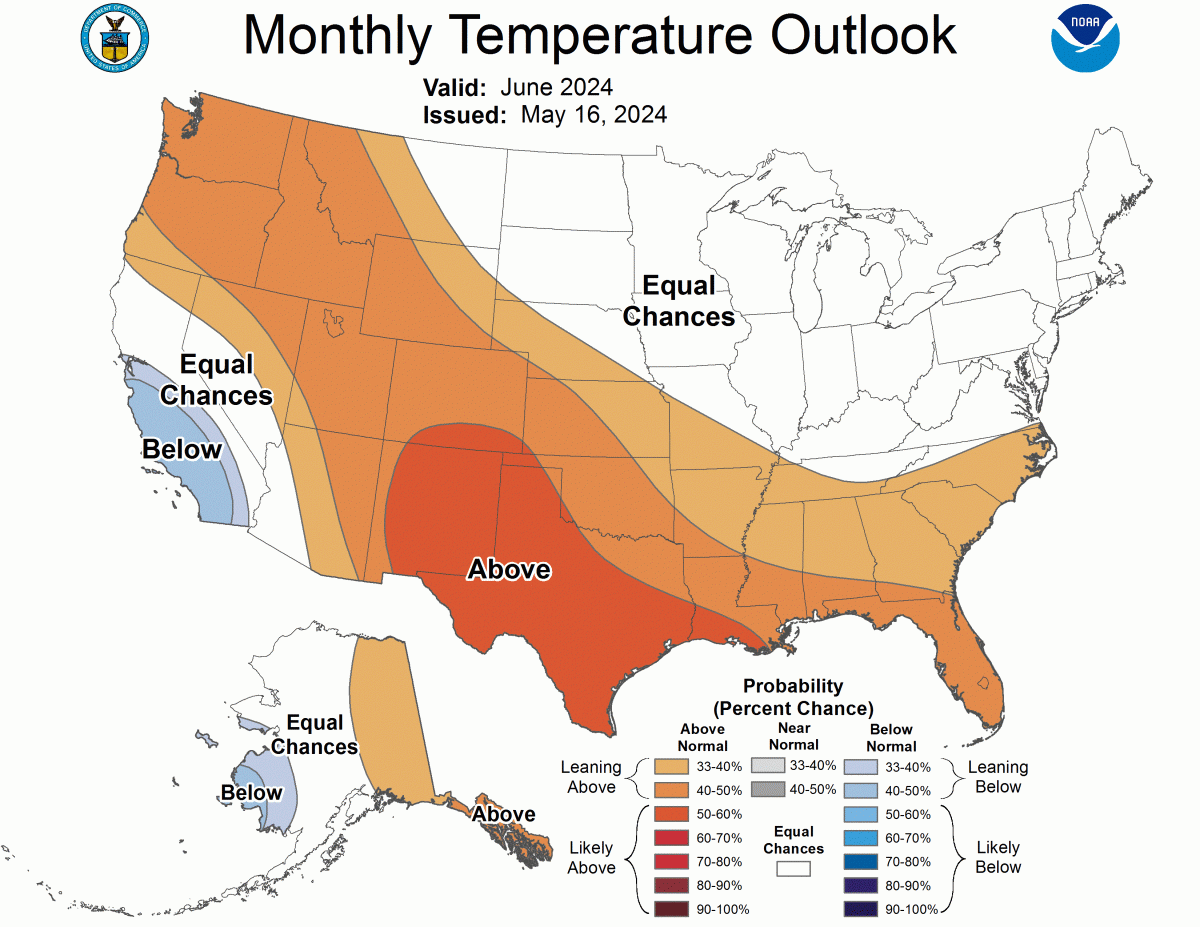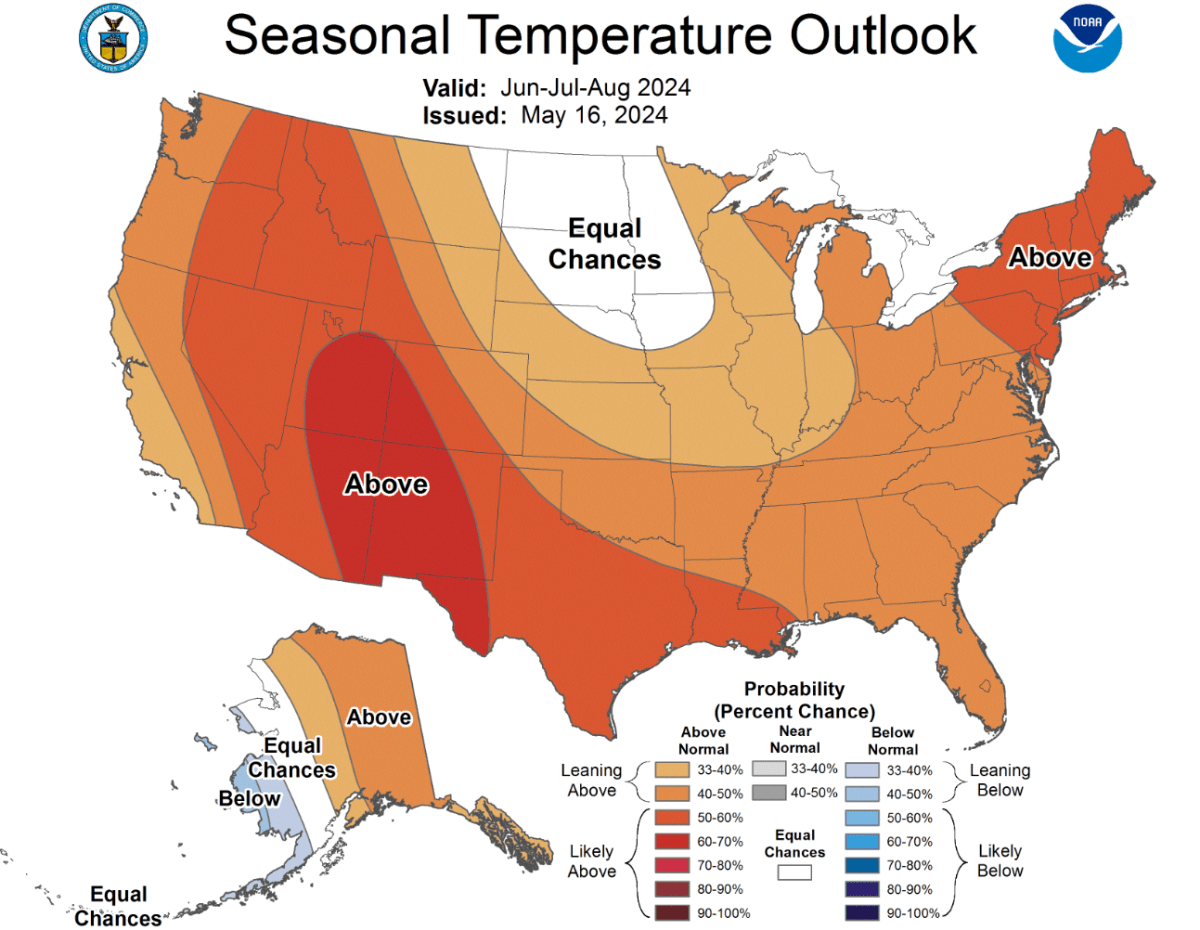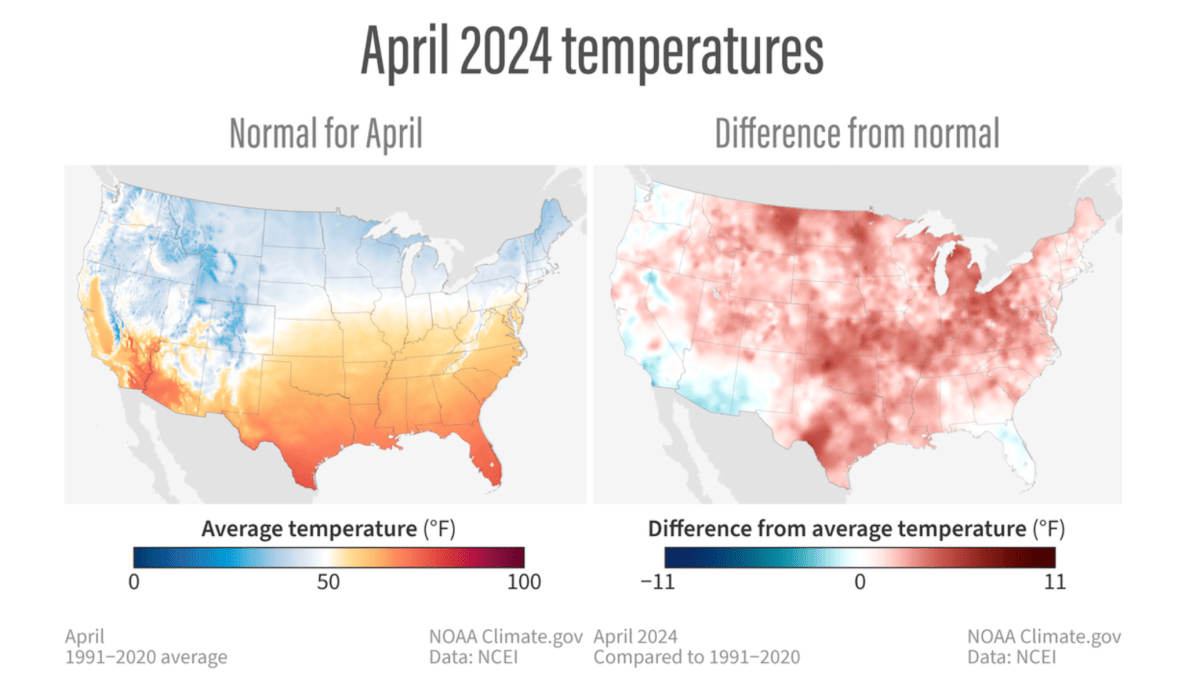Leer esta página en: Español

Punishing heat arriving across South Texas this week places most residents in region under ‘extreme’ threat of negative heat-related health impacts.
Greg Harman
The first full blast of industrially supercharged heat of 2024 is arriving this week across San Antonio and South Texas. With temps expected to reach well above 10 degrees over the area’s historical average highs, Climate Central researchers have determined much of the heat arriving will have been made at least five times more likely due to fossil fuel-driven climate change.
Climate Central’s Climate Shift Index utilizes data from 22 climate models and calculates the frequency of the temperatures in the modeled climates (with and without the influence of climate change) as well the frequency of daily temperatures for the past 30 years.
“Texas residents are being exposed to more days of dangerous heat because of climate change,” said Andrew Pershing, Climate Central’s vice president for science. “Until carbon pollution reaches net zero, health risks will only get worse.”
“Rising temperatures are making it harder, and also more important, for policymakers to protect people from the impacts of extreme heat, now and in the future,” Pershing said.
Temperatures are expected to range over the coming days from the upper 90’s to 110 and higher, testing the state’s power grid. Heat indexes, the combination of air temperature and relative humidity, are expected to approach 120F by week’s end in some areas.
Global temps have been breaking heat records regularly for years as greenhouse gas concentrations in the atmosphere over the last hundred years have surged to levels not seen since dinosaurs roamed the Earth. The rise in heat-trapping gases, most significantly carbon dioxide, is a result of both the incessant burning of fossil fuels and the elimination of “carbon sinks,” such as old-growth forests, that historically have absorbed and held much of that carbon. But 2023 and 2024 have been demonstrating unprecedented levels of heat that even climate scientists are struggling to explain.
Heat advisories and heat warnings are being issued across South Texas and Mexico this week.
The National Weather Service HeatRisk maps place most residents of South Texas—including in portions of San Antonio and Bexar County—at extreme risk of heat-related impacts in the coming days.

A heat advisory for residents of the Big Bend area and east in the towns of Dryden and Sanderson on Wednesday encouraged residents to shelter away away from sun—ideally in an air-conditioned room.
For San Antonio, the National Weather Service urges:
“Those spending extended time outdoors and not acclimated to the heat could be susceptible to heat related illness if not taking proper heat precautions, such as drinking plenty of water and taking frequent breaks out of the sun and heat.”
A heat advisory today stretching from Nueces County and across La Salle, McMullen, Webb, and Jim Wells counties, among others, warns that “hot temperatures and high humidity may cause heat illnesses.” Access to air conditioning, time out of the sun, and drinking lots of water, are advised.
Update (May 23, 2024): Excessive heat warnings across the Rio Grande Valley on Thursday forecast the heat index there reaching 118F—with temperatures expected to climb further still across the region into Monday. Watch Heat.gov for updates.
Heat is the most lethal of all weather-related disasters. However, as Deceleration has written previously, health officials in Bexar and Nueces counties have little idea how many people may be dying from the heat in any given year. Occupational Safety and Health Administration officials wrote recently that heat-related deaths nationally are likely a “vast undercount.”

As Axios reported, the heat dome that has settled over Central America and much of Mexico also contributed to the massive storm that barreled into Houston last week, killing at least 8 and stranding hundreds of thousands without power.
This coming year has long been forecast to be well above average temperatures. The shift from El Niño to La Niña climate patterns is almost certainly contributing to the higher temperatures, a fact that has led, in part, some to conclude this summer could eclipse the unprecedented heat of 2023.
In spite of fielding much of the blame for last summer’s high heat from some in the media, El Niño generally has a cooling effect in the southern United States and even on Texas summers for much of the state. Seasonal forecasts available through most of the year from the National Oceanic and Atmospheric Administration show temps most likely to remain well above average.



NOAA Seasonal Temperature Outlooks for June through October, 2024.
Although last year was the hottest year in Texas’s recorded history, the state would have been even warmer, NASA data scientist Andrey Savtchenko wrote, if not for the cooling influence of El Niño.
“[D]on’t blame El Nino for the scorching heat you’re experiencing,” Texas A&M-based climate scientist Andrew Dessler chimed in. “Instead, blame the oil companies.”
Last month continued a burning trend on Earth with both air and ocean temperatures shattering records for 12 and 13 months running, respectively. A recent heat-driven global coral bleaching event did not spare the relatively deep and healthy coral reef system off the Texas and Louisiana coast.

A recent update to state climate projections from the Office of the State Climatologist states that average Texas temperatures by 2036—without a radical shift away from fossil fuels and ecological disturbance—will reach an expected extra 3 degrees Fahrenheit increase on average over what the Earth averaged during the second half of the 20th century.
-30-

Like What You’re Seeing? Become a patron for as little as $1 per month. Explore ways to support our mission. Sign up for our newsletter (for nothing!). Subscribe to our podcast at iTunes. Share this story with others.
